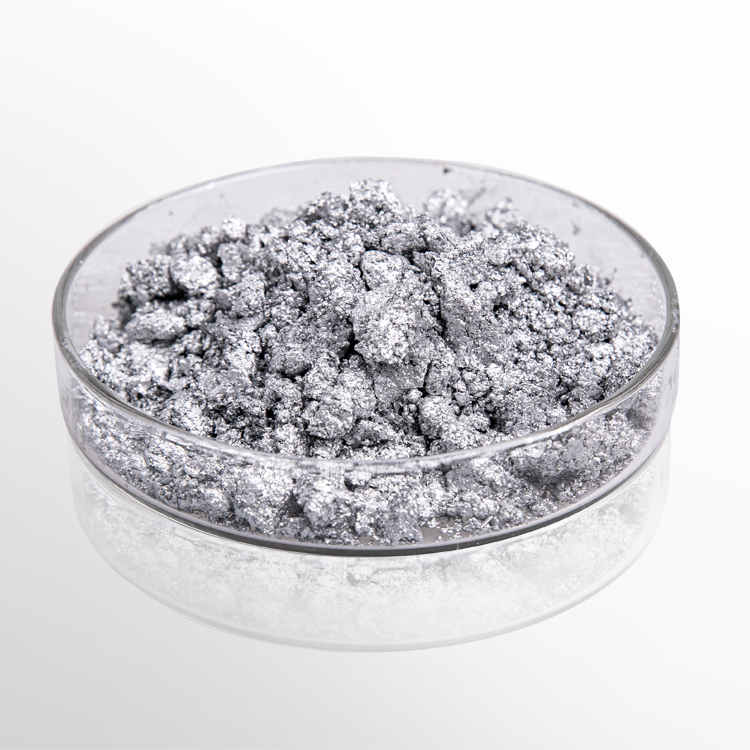Aluminium Paste Dispersion & Flocculation Issues: Causes and Solutions
2025 / 11 / 25What Aluminium Paste Is & Why Proper Dispersion Matters
Aluminium paste is a metallic pigment widely used in automotive coatings, industrial paints, plastics, inks, and water-based systems.
Good dispersion ensures:
-
Uniform metallic orientation
-
High reflectivity
-
Smooth film appearance
-
Stable viscosity
-
Long storage life
Poor dispersion or particle agglomeration (flocculation) directly affects color brightness and coating smoothness.
Typical Symptoms of Dispersion & Flocculation Problems
1. Visible Pigment Aggregates
-
Large silver specks or “seeds” in the paint
-
Uneven brightness
-
Rough metallic appearance
2. Viscosity Instability
-
Unexpected thickening or gel formation
-
Hard settling at the bottom of the container
3. Poor Metallic Orientation
-
Dull appearance
-
Loss of “sparkling” effect
-
Stripe or cloud patterns in spray coatings
Likely Causes Behind Dispersion or Flocculation
1. Incompatible Solvent or Resin System
Most aluminium paste for paint is designed for oil-based systems.
Water-based resins or reactive additives can destabilize the paste surface.
Reasons include:
-
Incorrect solvent polarity
-
Reactive functional groups attacking the aluminium surface
-
Resin not wetting the aluminium flakes properly
2. Improper Mixing Method
Insufficient shear → under-dispersion
Over-shear → broken flakes → dull appearance
Common issues:
-
High-speed mixing without pre-wetting
-
Adding aluminium paste directly into water
-
Long dispersion time causing mechanical damage
3. Additive or pH Interference
Certain dispersants or amines may cause:
-
Flake swelling
-
Hydrogen reaction
-
Agglomeration
Water-based systems, if not protected, may also cause micro-corrosion, resulting in gas bubbles and flake bonding.
Prevention & Solutions for Stable Aluminium Paste Dispersion
1. Optimize Resin & Solvent Compatibility
-
Use solvents with similar polarity to the carrier oil of the aluminium paste.
-
Prefer oil-based coatings unless using a specially treated water-based aluminium paste.
-
Avoid strong alkaline conditions (pH > 8).
2. Correct Dispersion Procedure
Recommended procedure from ZHANGQIU METALLIC PIGMENT specialists:
-
Pre-wet aluminium paste in a small amount of compatible solvent
-
Add slowly into the resin under moderate shear
-
Avoid over-shearing to keep the flake shape intact
-
Add dispersant only after uniform distribution
3. Storage & Formulation Stability Control
-
Maintain low moisture environments
-
Avoid mixing acidic + alkaline additives
-
Use resin-coated aluminium paste when high stability is required
Application Insights & Comparison
| Coating Type | Dispersion Stability | Recommended Aluminium Paste | Notes |
| Oil-based coatings | Excellent | Standard aluminium paste | Most widely used |
| Water-based coatings | Medium to low | Water-based aluminium paste | Requires special treatment |
| Floating types (leafing) | Moderate | Leafing aluminium paste | Prone to film defects if not dispersed well |
| Non-floating types (non-leafing) | High | Non-leafing aluminium paste | Most stable & common |
| Resin-coated grades | Very high | Coated aluminium paste | Best for anti-flocculation |
This table helps formulators select the correct grade before production, reducing dispersion failures.
Common Questions About Aluminium Paste Dispersion
Why does my metallic paint show “seeds”?
Likely poor wetting or agglomeration due to incompatible resin or insufficient dispersion.
Can water-based systems use standard aluminium paste?
No. Use water-based aluminium paste with special passivation to avoid flocculation and gas formation.
Does price affect dispersion quality?
Yes. Lower aluminium paste price often means lower coating quality, poorer surface treatment, and higher flocculation risk.
What are the main aluminum paste uses?
Automotive coatings, industrial machinery paint, plastics masterbatch, inks, reflective coatings, and anti-corrosion systems.
Call to Action
Stable dispersion is the foundation of a high-quality metallic effect.
If you experience flocculation, brightness loss, or viscosity issues, our technical team can provide formulation guidance and the correct aluminium paste solution.
Contact ZHANGQIU METALLIC PIGMENT CO., LTD


